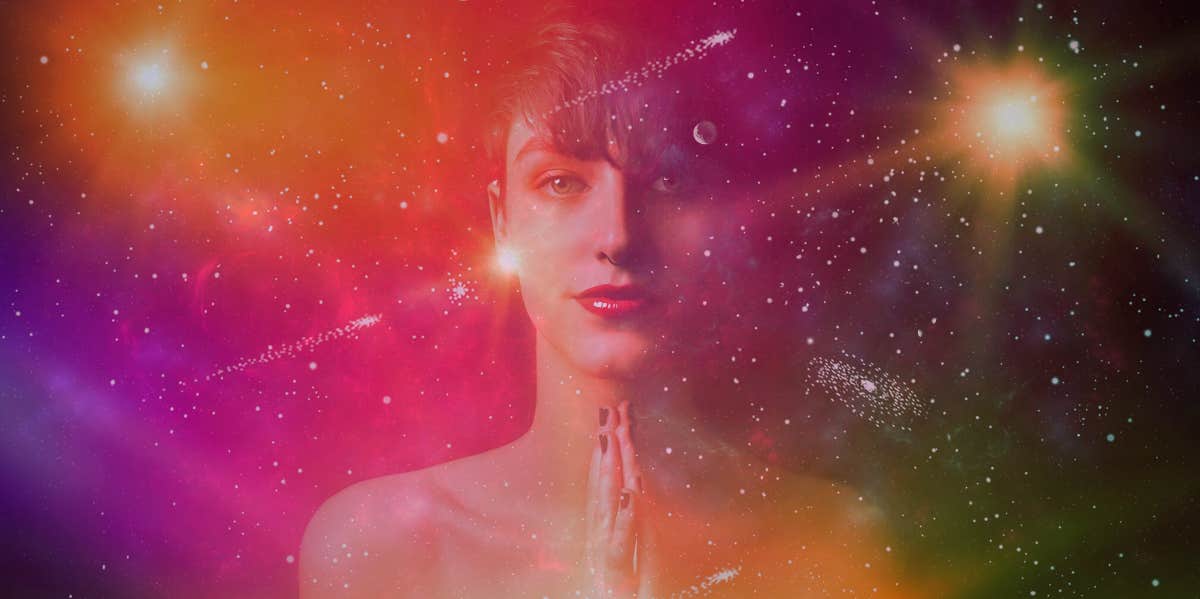It Turns Out The Universe Has An 'Average' Color — And It's Not Black
Well, it's not black.
 11145955 / pixabay, GeorgePeters / Getty Images via Canva
11145955 / pixabay, GeorgePeters / Getty Images via Canva When most people think of the universe, they likely imagine that it is an infinite pool of blackness, peppered with stars here and there. Or maybe they envision it to be a colorful mix of galaxies, planets and stars, vibrant and beautiful.
But the color of the universe is less complex than you may have thought.
According to scientists Karl Glazebrook and Ivan Baldry, the universe is not black like we might imagine. In fact, the color of the universe is a beigeish-white color.
And if you’re looking to get specific, the exact RGB color is #FFF8E7.
To determine what color the universe is, scientists asked themselves what color the sky would be if all of the colors were smeared and blended together. The question arose when they were looking for common stars in galaxies nearby.
To come up with a color, astronomers computationally averaged light emitted from a bigger sample of galaxies they had analyzed, the 200,000 galaxies of the 2dF galaxy redshift survey.
This produced a cosmic spectrum that had some emission in all parts of the electromagnetic spectrum, but a single perceived composite color.
Over the past 10 billion years, the color of the universe has become less blue, an indication that there are more red stars in the galaxy.
Scientists had a contest to come up with a new name for the color of the universe because, let’s face it, #FFF8E7 does not easily roll off the tongue.
There were several good entries for the name such as skyvory, univeige, Big Bang Buff/Blush/Beige, and cappuccino cosmico, but in the end, they settled for one we can all get behind: cosmic latte.
"Cosmic latte" is based on the Italian word for milk. The entire research team was polled in order to name the color. (One of the name suggestions I'm personally glad did not make the cut was primordial clam chowder.)
If you’re confused by the process they used, let's break it down to layman’s terms.
The visible light from all of the luminous celestial bodies was measured to determine the average color.
“But the universe is black,” you might say. That is a logical theory since the night sky appears to be black to the human eye. But according to Baldry, black is not a color, but is the absence of color.
Instead, the color of the universe was determined by calculating visible light created throughout the universe by stars and galaxies, and extending for light years.
Even TikTok has caught on to how interesting this entire process is, with many TikTokers taking to the platform to explain why the universe is not black like many think.
Whether you find this new information boring or amusing, it is definitely amazing that modern technology has evolved enough to give us information we never expected to receive!
NyRee Ausler is a writer from Seattle, Washington, and the author of seven books. She covers lifestyle and entertainment and news, as well as navigating the workplace and social issues.

